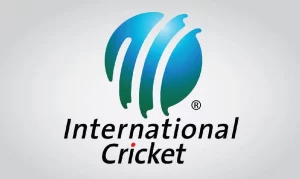ICC introduces stop clock in new WTC cycle

Dubai: The ICC has introduced a stop clock in Test cricket to deal with slow over rates while allowing fielding teams to decide which batter should be on strike in case of a ‘deliberate’ short-run as part of the playing conditions for 2025-27 World Test Championship cycle.
The new rules have been implemented from the 2025-2027 World Test Championship, which got underway with the first of the two Tests between Sri Lanka and Bangladesh in Galle.
According to the ICC Test Match Playing Conditions on the governing body’s website, the use of the stop clock — like in limited-overs cricket — has been implemented to eradicate the issue of slow over-rate.
“The fielding side shall be ready to start each over within 60 seconds of the previous over being completed. An electronic clock will be displayed on the ground that counts up seconds from zero to 60,” the ICC said.
The fielding side will thus be given two warnings, and in case of a third infraction, the batting side will be awarded five penalty runs.
These warnings will be reset to zero after the completion of 80 overs, the ICC said.
Meanwhile, ESPNcricinfo reported that the ICC no longer mandates the umpires to change the ball once they discover saliva on it. The ban on the use of saliva remains in force.
The website said fielding teams may deliberately apply saliva on the ball to force a ball-change, but the current document available on playing conditions for men’s Test cricket does not mention any such change.
The ICC also said in case there are instances of referrals being made by both player and the on-field umpire, the process will be carried out in a chronological order, effectively as per the order of their occurrence.
The ICC instructed that in case of a second review of a decision adjudged ‘out’ by an on-field umpire, the default decision for the subsequent mode of dismissal will remain ‘out’.
For example, if a batter challenges an on-field call for caught-behind and is adjudged not out with the replays showing the ball hit the pads, the TV umpire would subsequently turn to see if the batter was out leg-before.
In such a scenario, the default decision for this mode of dismissal will be ‘out’ and if the ball-tracking shows ‘umpire’s call’, the batter will be given ‘out’.
In case of a “deliberate short run”, the ICC explained, “A deliberate short run is an attempt for batters to appear to run more than one run, while at least one batter deliberately does not make good their ground at one end.”
“Batters may choose to abort a run, provided the umpire believes that there was no intention by the batter concerned to deceive the umpires or to score the run in which they didn’t make their ground.”
In such scenarios, the umpire at the bowler’s end will disallow all runs to the batting side, return any not out batter to his original end, signal a no-ball or a wide-ball if applicable, make a short-run signal to the scorers, award five penalty runs to the fielding side and “request their captain to identify which of the two batters will be on strike for the next delivery”.
The ICC said the TV umpire will now review the fairness of a catch taken off a no-ball. In case of a fair catch, the batting side will get an extra run for the no-ball, and in case the catch is not cleanly taken, the batting side will get the runs the batters would have taken.
In the previous edition of the playing conditions, the TV umpire was not needed to look into the fairness of a catch off a no-ball.
News